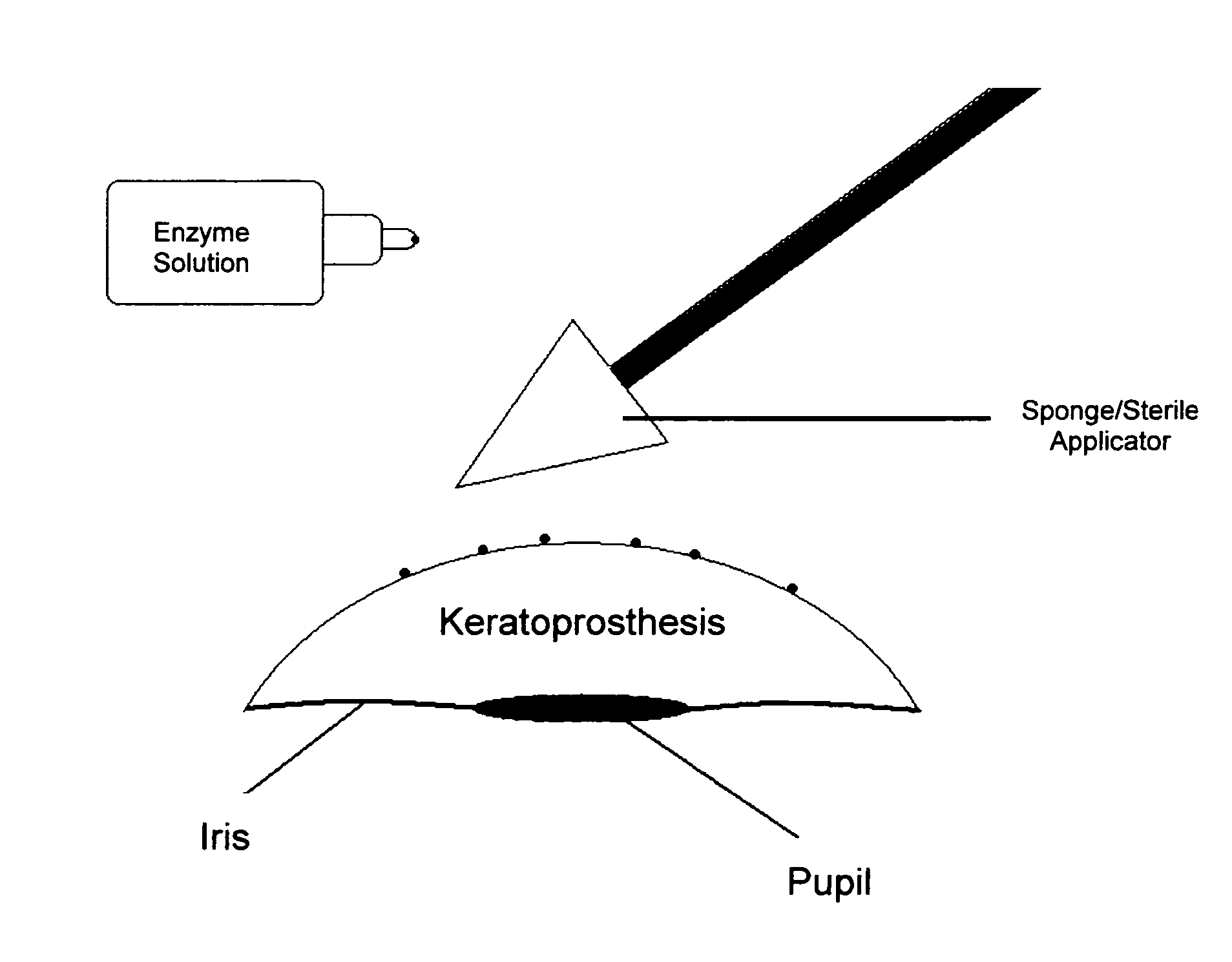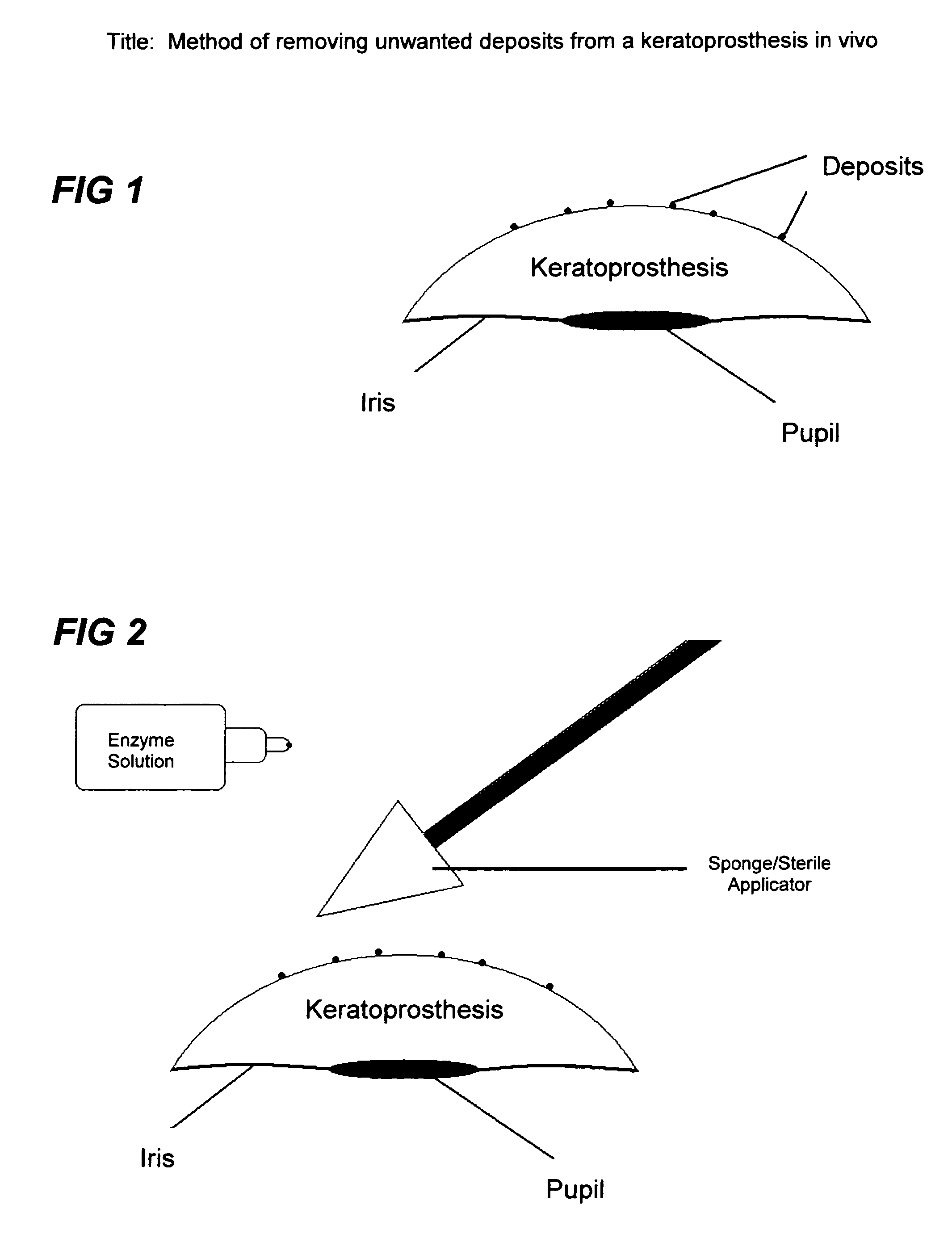Method of removing unwanted deposits from a keratoprosthesis in vivo
a keratoprosthesis and keratoprosthesis technology, applied in the field of corneal transplantation surgery, can solve the problems of compromising the structural integrity of the device, affecting the optical performance of the keratoprosthesis, and unsatisfactory deposits of proteins and lipids, and achieve the effect of prolonging the life of the keratoprosthesis
- Summary
- Abstract
- Description
- Claims
- Application Information
AI Technical Summary
Benefits of technology
Problems solved by technology
Method used
Image
Examples
Embodiment Construction
[0039] The applicant has conceived a method of using cleaning solutions containing enzyme or chelating agents that dissolve these deposits in vivo, and to remove such deposits from the surface of a keratoprosthesis. For example, a composition containing pancreatin marketed by Alcon Laboratories under the trademarks OPTI-FREE® SUPRACLENSE® may be used in vivo with great success in removing undesirable deposits from a keratoprosthesis.
[0040] Alternatively, the method for removing deposits may be performed while the patient is sitting erect at the slit lamp.
[0041] The method is preferably performed while holding open the patient's eye with a speculum or lid retractor so that the cleaning solution may be applied with precise control.
[0042] Alternatively, the patient's eyelids may be held open by hand while the cleaning solution is applied.
[0043] As seen in FIG. 3, approximately 0.5-3 ml of cleaning solution is applied to the applicator tip.
[0044] As seen in FIG. 4, the applicator t...
PUM
 Login to View More
Login to View More Abstract
Description
Claims
Application Information
 Login to View More
Login to View More - R&D
- Intellectual Property
- Life Sciences
- Materials
- Tech Scout
- Unparalleled Data Quality
- Higher Quality Content
- 60% Fewer Hallucinations
Browse by: Latest US Patents, China's latest patents, Technical Efficacy Thesaurus, Application Domain, Technology Topic, Popular Technical Reports.
© 2025 PatSnap. All rights reserved.Legal|Privacy policy|Modern Slavery Act Transparency Statement|Sitemap|About US| Contact US: help@patsnap.com



